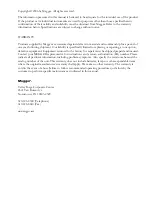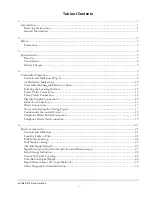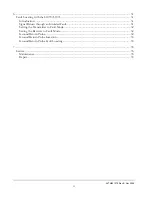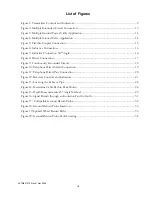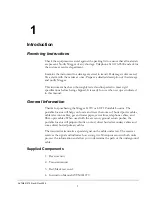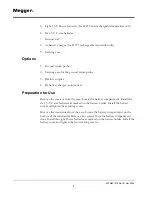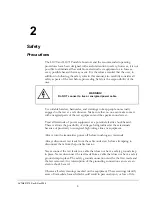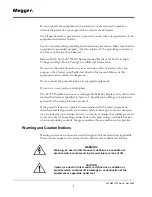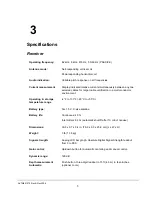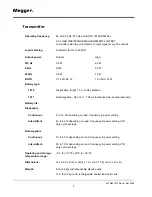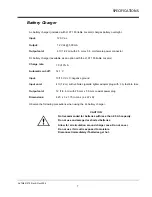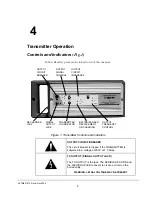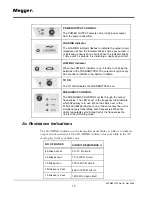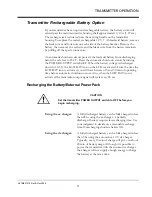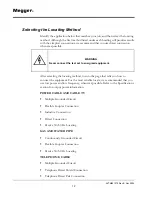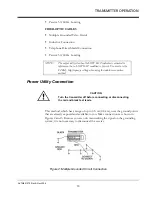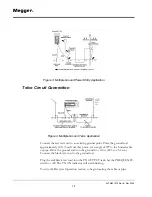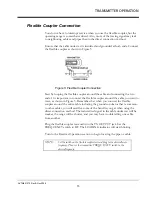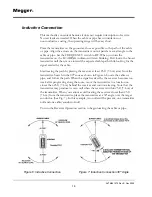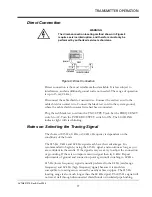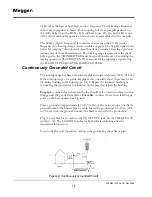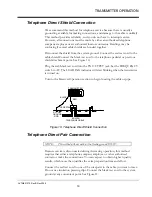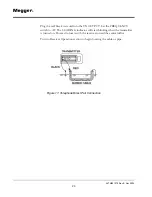
AVTM651070 Rev B Nov 2006
5
3
Specifications
Receiver
Operating frequency:
82 kHz, 8 kHz, 815 Hz, 50/60 Hz (PASSIVE)
Antenna mode:
Null-responding vertical coil
Peak-responding horizontal coil
Audio indication:
Variable pitch response on all frequencies.
Current measurement
Display indicated relative current simultaneously between any two
selected cables for target cable verification in a multi-conductor
environment.
Operating & storage
temperature range
-4°F to 133°F (-20°C to +55°C)
Battery type:
Six 1.5 V, C-size alkaline
Battery life:
Continuous: 40 hr
Intermittent: 82 hr (automatic shutoff after 10 min of nonuse)
Dimensions:
30.3 x 3.7 x 9.4 in. (76.9 x 9.3 x 23.8 cm) (L x W x H)
Weight:
3 lb (1.36 kg)
Signal strength:
Analog LCD bar graph. Absolute Digital Signal Strength readout
from 0 to 999.
Gain control:
Up/down button for automatic centering and manual control.
Dynamic range:
126 dB
Depth measurement
Automatic:
Push-button, three-digit readout to 15 ft (4.6 m) in feet -inches.
(optional m-cm)
Summary of Contents for L1070
Page 2: ...L1070 and L1071 Portable Locator Instruction Manual...
Page 4: ......
Page 8: ...AVTM651070 Rev B Nov 2006 iv M...



